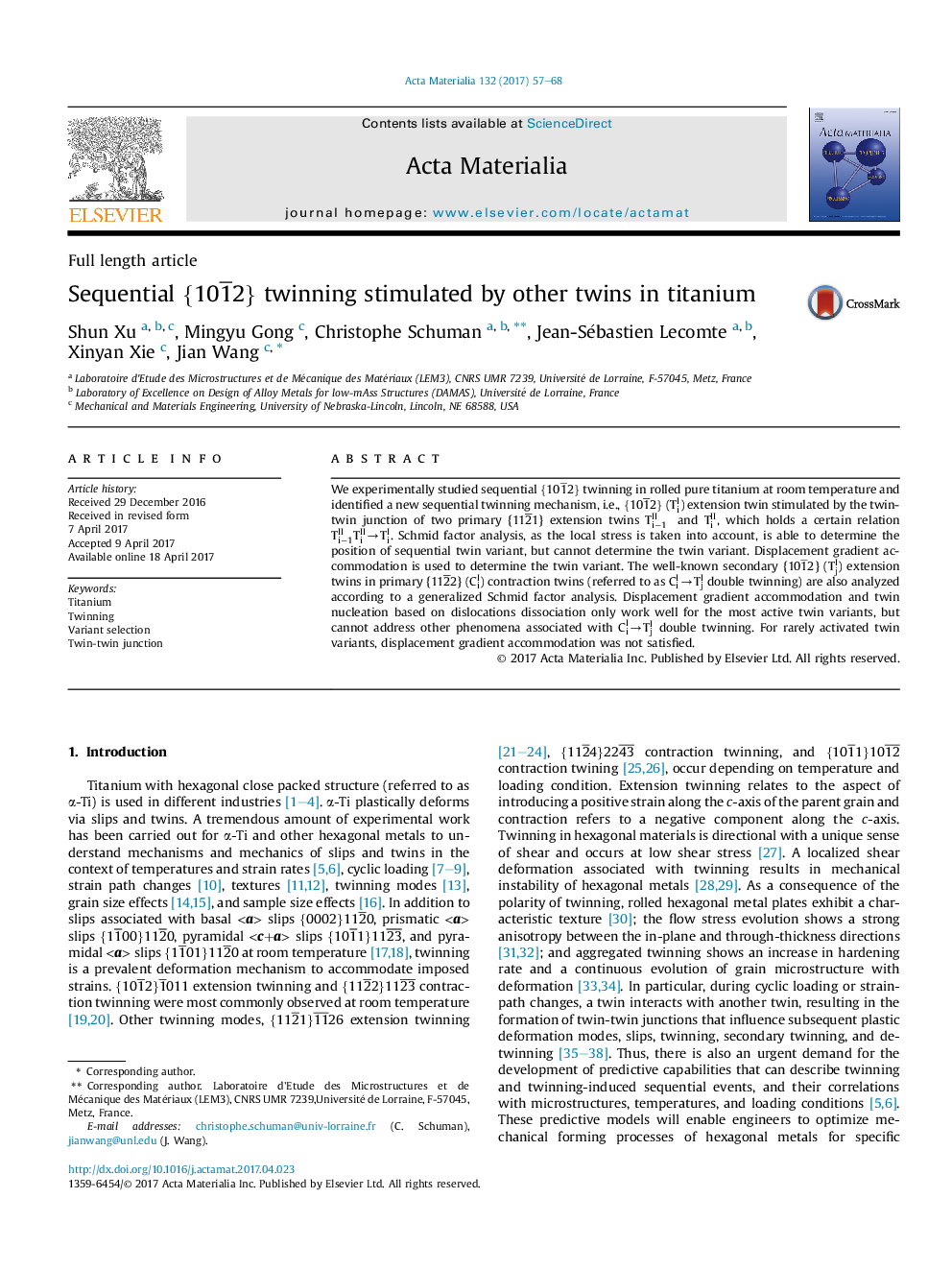| کد مقاله | کد نشریه | سال انتشار | مقاله انگلیسی | نسخه تمام متن |
|---|---|---|---|---|
| 5436144 | 1509544 | 2017 | 12 صفحه PDF | دانلود رایگان |

We experimentally studied sequential {101¯2} twinning in rolled pure titanium at room temperature and identified a new sequential twinning mechanism, i.e., {101¯2} (TiI) extension twin stimulated by the twin-twin junction of two primary {112¯1} extension twins Ti−1II and TiII, which holds a certain relation Ti−1IITiII→TiI. Schmid factor analysis, as the local stress is taken into account, is able to determine the position of sequential twin variant, but cannot determine the twin variant. Displacement gradient accommodation is used to determine the twin variant. The well-known secondary {101¯2} (TjI) extension twins in primary {112¯2} (CiI) contraction twins (referred to as CiI→TjI double twinning) are also analyzed according to a generalized Schmid factor analysis. Displacement gradient accommodation and twin nucleation based on dislocations dissociation only work well for the most active twin variants, but cannot address other phenomena associated with CiI→TjI double twinning. For rarely activated twin variants, displacement gradient accommodation was not satisfied.
Figure optionsDownload high-quality image (651 K)Download as PowerPoint slide
Journal: Acta Materialia - Volume 132, 15 June 2017, Pages 57–68